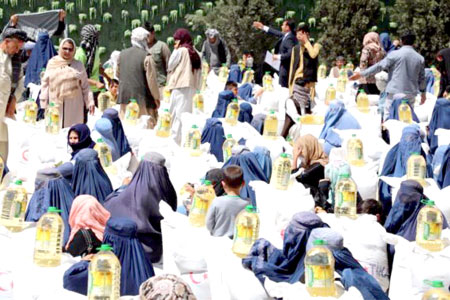Lack of coordination in the distribution of humanitarian aid has provoked criticism from some government agencies and a number of economists.
The National Statistics and Information Authority (NSIA) said it has official figures on poverty, food security and unemployment, but so far none of the aid agencies have used the figures.
“No institution has asked us for statistics, and everything they do is on its own, without using or coordinating with official statistics,” said Hasibullah Muwahed, deputy director of the NSIA.
Meanwhile, the Ministry of Economy says that these institutions are separate from the United Nations institutions and if all the aid is distributed evenly, the cost of aid projects will be reduced and the aid will be distributed to needy people.
“Our emphasis is more on aid being coordinated by government departments to reduce project costs and to reach the needy people,” said Abdul Rahman Habib, spokesman for the Ministry of Economy.
According to the Ministry of Economy, 45 aid agencies have so far distributed humanitarian aid to three million people in the country.
In the meantime, some economists believe that lack of coordination in the distribution of humanitarian aid will reduce effectiveness.
“Lack of coordination in the delivery of aid will increase the cost of aid and reduce its effectiveness, and will not reach those in need and reduce poverty,” said Mir Shakib, an economist.
The Ministry of Finance has recently set up a committee to coordinate and monitor humanitarian aid so that it can be distributed to the real needy in the country.
But so far no government agency has any real figures on the amount of humanitarian aid.—Tolo News










